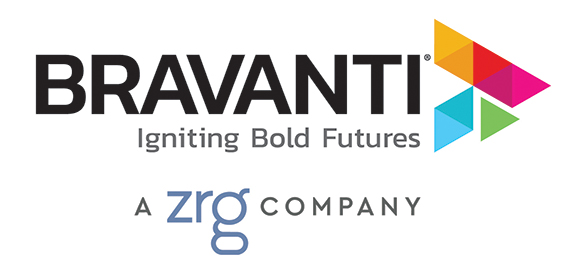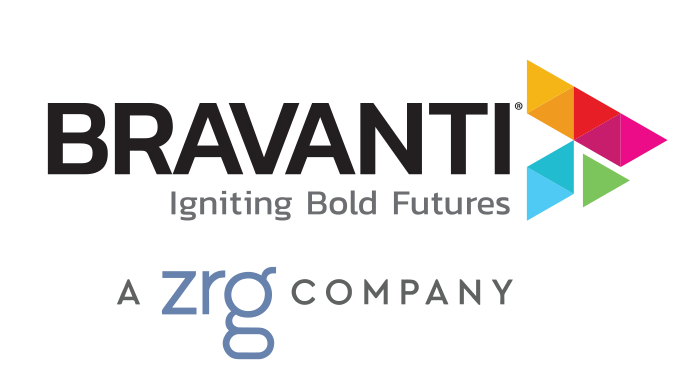By Bravanti
Despite what you might have heard, beanbag chairs and kombucha on-tap aren’t going to cut it in the employee engagement game. Even with an intense and growing focus on engagement, the proper means of measuring it (or properly defining it) remains a relative mystery to many organizations – and it shows.
According to a recent ADP study of more than 19,000 employees across 19 countries, an overwhelming 84% of workers are not “fully engaged.” As one CEO recently said, “I don’t want a satisfied workforce, I want an engaged workforce.”
The primary challenge is that no two employees are alike. Today’s increasingly diverse workforces bring a varied set of experiences, backgrounds, creativity, and thought processes to the table. An organization’s culture and engagement programs must reflect that variety, especially given the direct correlation between workplace diversity and increased revenue generation.
Employee engagement can mean different things to different people. Identifying what’s important, understanding what to measure, how often to measure, and when to do so are only a few foundational questions and they don’t even address what to do after you have your results.
While there isn’t a one-size-fits-all employee engagement solution (nor should there be), there are some essential elements to consider in your efforts for scalable, long-term success.
Employee Engagement Essential #1: Find What Matters and Measure It In Earnest
Identifying your employee engagement key performance indicators and accurately measuring them are two of the most difficult elements of employee engagement. These KPI’s ebb and flow between seasons, locations, and within different areas of your company; thus finding your true KPIs is a year-round job.
Additionally, it’s critical to also identify what’s most important across your segments of employees so that you can then determine where to focus resources. For example, if company outings get low ratings, and are also not as important to most people, your company may be better served focusing time and investment on other low–rated (but highly important) areas instead.
You can eliminate some complexity by localizing employee engagement initiatives into daily operations. Localized efforts can help your organization maintain a proactive and consistent understanding of what your employees need and expect as contributing team members, while taking into consideration any special circumstances or requirements driven by a specific location.
You can then establish standards and processes to measure those KPIs regularly throughout the year using a diverse set of means (surveys, interviews, monitoring social feeds, etc.). Direct and indirect feedback will provide you with the most comprehensive outlook on the health of your employee engagement initiatives companywide, especially when monitored year-round.
Employee Engagement Essential #2: Establish Open, Honest Feedback Loops
Even the most well-intentioned employee engagement program can fail to meet expectations when employees don’t feel comfortable providing candid feedback. The ADP study found that trust is the foundation for engagement: employees who trust their team leader are 12 times more likely to be fully engaged than those who don’t.
Building trust among employees begins by clearly illustrating the intent behind your talent engagement initiatives, how you intend to use employee feedback, and why active, honest participation is important for both employee and the organization as a whole. The more employees feel invested in their own job satisfaction and engagement, the more likely they are to ask for what they really need.
Likewise, share the results with your employees. More on that below.
Employee Engagement Essential #3: Empower Leaders at Every Level
Relying on single-source intelligence for engagement is risky. There are many reasons why employees might not provide candid feedback: lack of buy-in, fear of reprisal, and misunderstandings around what feedback to provide are just a few reasons why first-person assessments might not provide the full picture.
Partnering with management at every level allows your organization to tap into their direct knowledge of – and relationship with – their direct reports to bolster feedback quality and provide insights you might otherwise miss.
This requires a blame-free environment. If leaders fear retribution for less-than-stellar engagement results, their own feedback might be skewed. Establish trust and empower management with the tools and resources they need to improve engagement and build partnerships that drive results.
Employee Engagement Essential #4: Act On Your Feedback
It’s one thing to measure and assess employee engagement; actively addressing it is something else entirely. Even with the proven correlation between engagement and performance, implementing change can be arduous and limited. This is true for both large, bureaucratic organizations or smaller, resource-strapped businesses.
However, failing to act on employee feedback can impact more than just performance; it can weaken the credibility of your employee engagement initiatives and your employer brand as a whole.
Develop a process for reviewing and implementing changes incrementally to demonstrate your commitment to both listening to and acting upon employee needs.
Take it a step further by releasing a quarterly or annual employee engagement report. Use it to highlight feedback results and outline the ways in which your company is addressing your workforce’s engagement needs. Not only will this reinforce trust in your initiatives, it will also keep talent informed of any relevant changes and available resources.
Employee Engagement Essential #5: Iterate and Scale
Employee engagement will continue to evolve at an accelerated rate, requiring an agile approach to ongoing engagement initiatives.
Build a foundation with a keen focus on small, iterative improvements that scale with change and growth. As you introduce new resources, programs, etc. as part of your engagement initiatives, continue testing their effectiveness and eliminate those that don’t move the needle.
While this approach requires more frequent activity, it can mitigate the need for large, costly transformations in the future. Test new methods and if you fail, then fail quickly, identify lessons learned, and move forward!
Employee engagement isn’t an exact science and given the value of a diverse, unique workforce, maybe it shouldn’t be an exact science. Your workforce’s uniqueness is what makes it great and the fact that it also makes it difficult to engage shouldn’t detract from that. By incorporating these five essentials into your talent initiatives, you can develop and scale employee engagement success for years to come.
For more information or to discuss how you’re engaging your employees, contact us at insights@bravanti.com.
Content Related to 5 Essentials to Win Big in the Employee Engagement Game
5 Ways HR Can Impact Business Strategy
Internal Mobility in the Age of Attrition: Improving Retention Through Career Transparency

